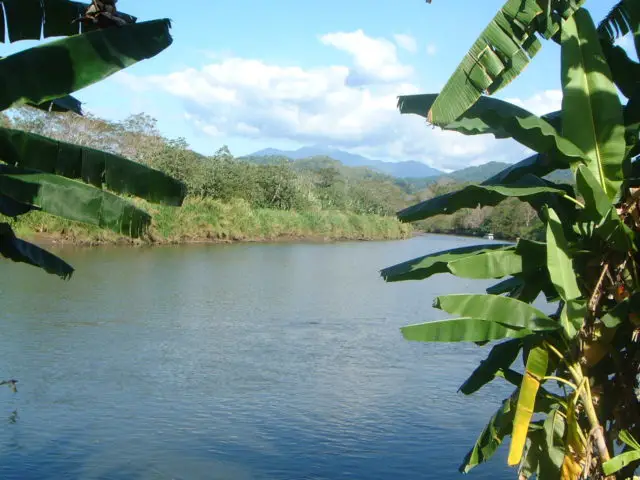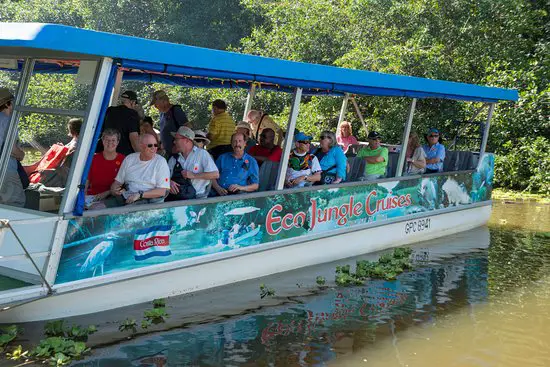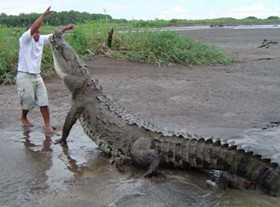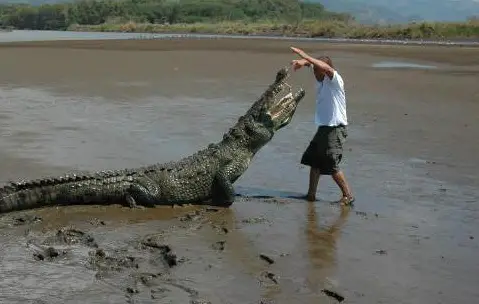
The Tarcoles River, also called Rio Grande de Tarcoles, is located in the province of Puntarenas, Costa Rica and passes through the Carara National Park. It is born in the central mountain range of the country, on the southern slopes and directs its waters to the west and southwest for about 70 km, until it flows into Pigres, Gulf of Nicoya, in the Pacific Ocean.
The river has marshes that offer bird watching opportunities, hiking trails and some of the highest waterfalls in the country. It extends its length to approximately 111km and its river basin covers an area of 2,121km where approximately 50% of the area’s population resides.
Known for its abundance Crocodiles

The Tarcoles River is one of the longest in the country. You can take nature treks to spots like the Guacalillo mangrove, at the height of its mouth, which represents a natural treasure not yet exploited by tourism and whose quiet canals have four of the five mangrove species that exist in Costa Rica, the black, red, white and piñuela mangroves, as well as all the variety of the rich flora and fauna of the region.
The Tarcoles River is formed by the union of the rivers Virilla and Grande de San Ramón, with a basin of more than 2,000 square kilometers, along with its main tributaries, crossing Carrara and Tumbales. Almost all of its channels form the physical border between the provinces of Alajuela and San José and serves as an irrigation source to plantations of sugarcane, coffee, banana, and cattle farming. The rivers that form the “Gran Tarcoles” basin were the first to be used in Costa Rica for the construction of hydroelectric dams such as “La Garita” on the Poas River, “Electriona” and “Belen” on Virilla.
Get to know more about the famous Crocodiles of the Tarcoles River

Many animals of different species call the banks of the Tarcoles River home, such as bird species like ducks, herons, mangrove canaries, parrots and the dwarf Kingfisher. Other animals include cherepos, large iguanas and agoutis to mention a few. But its greatest singularity is the abundance of American crocodiles that it houses in its waters and hillsides.
The Tarcoles has one of the largest populations in the world that is around 25000 crocodiles. These animals play an important role in the aquatic ecosystems, are a valuable economic resource, represent a great tourist attraction and have scientific interest, as they are the only survivors of the Archosaurus group.
These large reptiles can be seen swimming along the river or sunbathing along the sandbanks of sands. The river is a popular tourist attraction both domestic and foreign, for a large number of crocodiles and lizards that inhabit here. The bridge over the Tarcoles River in Costa Rica is a special attraction for tourists. Many people stop to watch the incredible concentration of crocodiles of all sizes here.

The Tarcoles River crocodile is the same species that is seen on the Florida Peninsula, Gulf of Mexico or some Caribbean Islands, as well as on the Pacific coast. This species is considered vulnerable and is on the protected species list worldwide.
Getting to the bridge over the Tarcoles River
The Tarcoles river bridge is located on Highway 34 on the route between the San José and Quepos. At the beginning of the bridge if you go from San José to Quepos or in the end if you go north there is a resting place where it is possible to park the car and enjoy the view.

